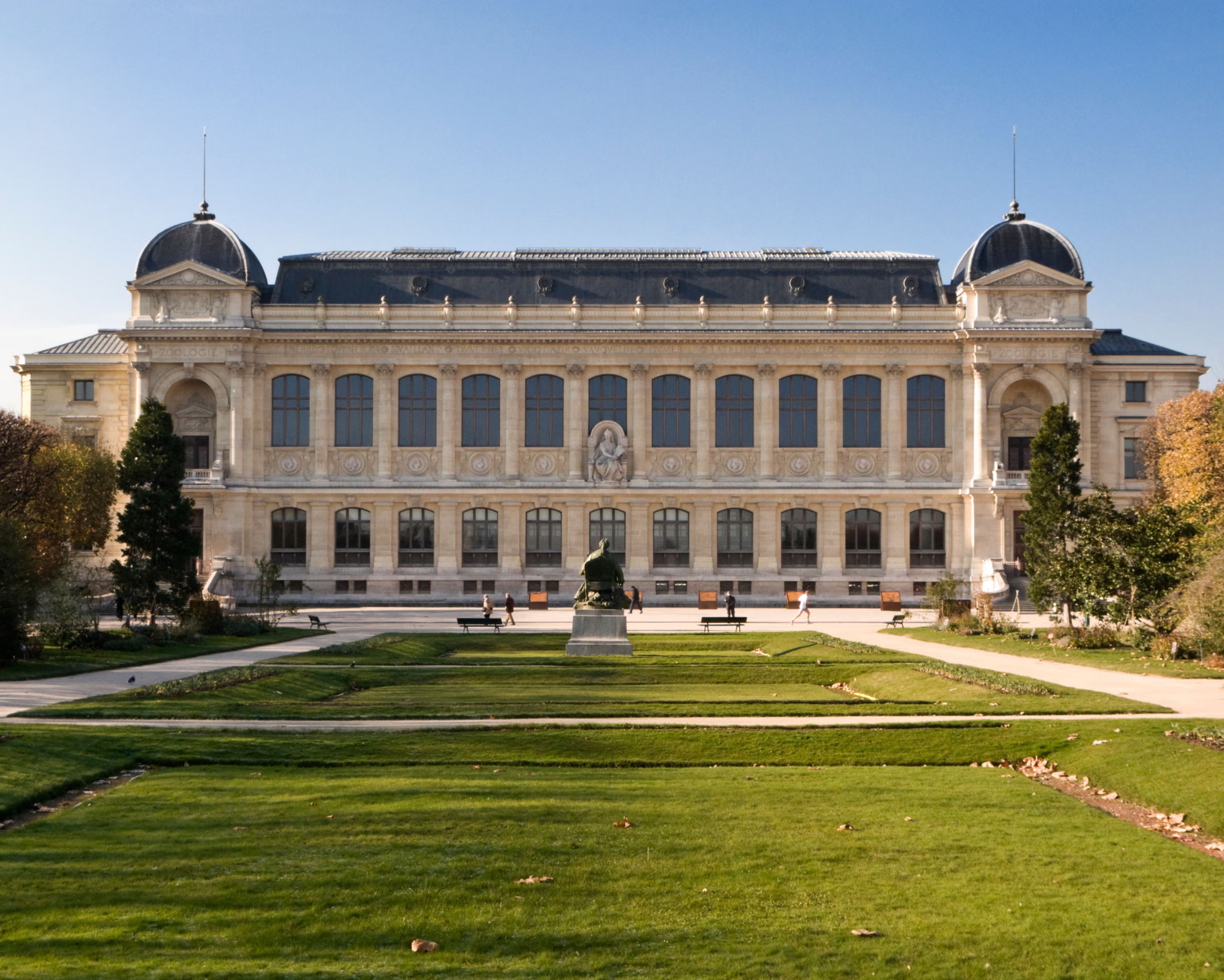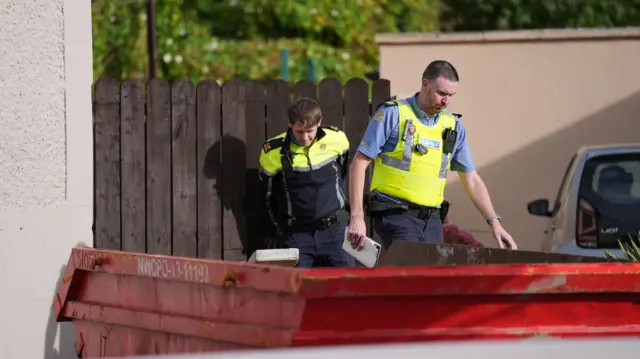On the night of September 15 to 16, 2025, the National Museum of Natural History in Paris, a cultural gem nestled in the chic 5th arrondissement, fell victim to a brazen heist. Thieves made off with gold samples valued at €600,000 ($700,000), leaving the museum and authorities grappling with the loss of artifacts that hold immeasurable scientific and cultural value. This article unravels the details of the robbery, its implications, and the broader context of museum security in France, offering a comprehensive look at this audacious crime.
The Heist: A Meticulously Planned Operation
The robbery at the National Museum of Natural History was no amateur job. Thieves, described as a “highly professional team,” used an angle grinder and a blowtorch to breach the museum’s defenses, targeting the Galerie de Minéralogie et de Géologie. Their precision suggests they knew exactly what they were after: several specimens of native gold, including a prized 9 by 8.5 cm native gold and quartz sample from California’s Donatia mine, donated by a wealthy French collector.
This calculated approach, as museum director Emmanuel Skoulios noted, indicates the thieves were well-equipped and informed, navigating the museum with surgical accuracy. The heist, discovered by a housekeeper in the early hours of September 16, 2025, left the mineralogy gallery temporarily closed as authorities scrambled to assess the full extent of the losses.
What Are Native Gold Samples?
Native gold is a naturally occurring alloy of gold and silver, prized for its raw, unrefined beauty and rarity. Unlike processed gold, these samples are valued not just for their metal content but for their geological significance, offering insights into Earth’s formation. At the Paris museum, these specimens were part of a national collection, cherished for their scientific and historical worth far beyond their €600,000 market value.
The stolen samples, as the museum’s press office emphasized, carry “immeasurable heritage value.” For researchers, they are windows into geological processes; for the public, they are dazzling relics of nature’s artistry. Losing them is akin to losing pages from a history book written by the Earth itself.
Why Are These Samples So Valuable?
The value of native gold lies in its dual appeal: scientific and cultural. Here’s why these samples are irreplaceable:
- Scientific Importance: They provide data on mineral formation, aiding studies in geology and earth sciences.
- Historical Significance: Many samples, like the Donatia mine specimen, have unique origins tied to specific mines or collectors.
- Rarity: Native gold is scarce, with pristine samples being exceptionally hard to find.
- Cultural Heritage: These artifacts are part of France’s national collections, symbolizing shared history.
The Broader Context: A Wave of Museum Heists in France
This theft is not an isolated incident but part of a troubling trend targeting French cultural institutions. In November 2024, the Cognacq-Jay Museum in Paris was hit by four men wielding axes and baseball bats, who stole 18th-century artifacts, including tobacco boxes on loan from the Louvre and the UK’s royal collection. The next day, a museum in Saône-et-Loire lost millions in jewelry to an armed robbery. Earlier in September 2025, the National Museum Adrien Dubouché in Limoges was stripped of porcelain artifacts worth €6.5 million.
These incidents highlight a growing vulnerability in France’s cultural sector. Museums, often housing priceless artifacts, are becoming prime targets for organized crime. The Paris heist, with its disabled alarms—possibly linked to a July 2025 cyberattack—raises questions about the adequacy of current security measures.
Comparing Recent French Museum Heists
| Museum | Date | Items Stolen | Estimated Value | Method |
|---|---|---|---|---|
| National Museum of Natural History, Paris | September 2025 | Native gold samples | €600,000 | Angle grinder, blowtorch |
| Cognacq-Jay Museum, Paris | November 2024 | 18th-century tobacco boxes | Undisclosed (high value) | Axes, baseball bats |
| Saône-et-Loire Museum | November 2024 | Jewelry | Several million euros | Armed robbery |
| National Museum Adrien Dubouché, Limoges | September 2025 | Porcelain artifacts | €6.5 million | Undisclosed |
This table underscores the diversity of targets and methods, suggesting a sophisticated network of thieves exploiting varied vulnerabilities.
How Did the Thieves Pull It Off?
The Paris heist was a masterclass in criminal precision. According to reports, the thieves cut through barbed wire and immobilized three guard dogs, bypassing security systems that may have been compromised by a prior cyberattack. Their use of professional tools like blowtorches and angle grinders indicates access to specialized equipment and knowledge of the museum’s layout.
Imagine the scene: under the cover of night, a team moves silently through the Jardin des Plantes, their tools humming softly as they slice through barriers. They knew the gold samples’ location, likely from insider information or meticulous reconnaissance. It’s the kind of operation you’d expect in a Hollywood thriller, yet it unfolded in one of Paris’s most prestigious institutions.
Security Failures: What Went Wrong?
Museum security is a delicate balance between accessibility and protection. The National Museum of Natural History, famed for its dinosaur skeletons and taxidermy, welcomes thousands of visitors daily, making airtight security challenging. Key issues exposed by the heist include:
- Disabled Alarms: A July 2025 cyberattack may have weakened the museum’s surveillance systems.
- Physical Vulnerabilities: Barbed wire and guard dogs were no match for determined thieves.
- Targeted Knowledge: The thieves’ focus on specific gold samples suggests insider information or detailed planning.
The Aftermath: Impact on the Museum and Beyond
The theft’s ripple effects are profound. The museum closed its mineralogy gallery to assess losses, disrupting visitors and researchers. The loss of irreplaceable specimens undermines scientific study and erodes public trust in cultural institutions. As the mayor of Limoges, Émile Roger Lombertie, noted, “Criminality is increasing, we always have to be one step ahead.” Yet, this heist shows museums are struggling to keep up.
For the public, the incident is a stark reminder of the fragility of shared heritage. These gold samples aren’t just shiny rocks; they’re pieces of history, painstakingly collected and preserved. Their theft feels personal, like a violation of a collective legacy.
Emotional Appeal: Why This Hits Hard
Picture a child gazing at a glittering gold nugget, imagining ancient rivers shaping it over millennia. Now, that moment is gone, stolen by thieves who saw only dollar signs. I remember visiting a natural history museum as a kid, awestruck by fossils and minerals that felt like treasures from another world. Losing these artifacts isn’t just a financial hit; it’s a theft of wonder, a blow to the curiosity that museums ignite.
Investigating the Crime: What’s Next?
The French judicial police’s anti-banditry brigade is leading the investigation, treating the case as “theft in an organized band.” The precision of the heist suggests a professional network, possibly linked to other recent museum robberies. Authorities are likely exploring:
- Forensic Evidence: Traces left by tools or DNA could identify the culprits.
- Black Market Connections: Stolen artifacts often surface in illegal markets, and international cooperation may be needed to track them.
- Security Audits: Museums across France are reevaluating their defenses to prevent future breaches.
Challenges in Recovery
Recovering stolen artifacts is notoriously difficult. While Russia recently returned ancient gold coins stolen from a French museum in a separate incident, such successes are rare. The black market for cultural artifacts is vast, and native gold’s high value makes it a prime target for melting down or private collectors.
Pros of Recovery Efforts:
- International collaboration can trace artifacts across borders.
- Publicity may deter buyers, forcing thieves to hold onto the items.
- Advanced forensics can link tools or materials to suspects.
Cons of Recovery Efforts:
- Artifacts may be melted down, destroying their scientific value.
- The black market is secretive, with buyers often untraceable.
- Limited resources stretch police efforts thin across multiple heists.
People Also Ask (PAA) Section
Below are real questions sourced from Google, addressing common curiosities about the heist:
What was stolen from the National Museum of Natural History in Paris?
Several native gold samples, including a 9 by 8.5 cm gold and quartz specimen from California’s Donatia mine, were stolen. Valued at €600,000 for their raw gold content, their scientific and cultural worth is deemed immeasurable.
How did the thieves break into the Paris museum?
The thieves used an angle grinder and a blowtorch to breach the museum, cutting through barbed wire and immobilizing guard dogs. Their precise targeting suggests prior knowledge of the museum’s layout and security weaknesses.
Why are museum heists becoming more common in France?
A wave of high-profile thefts, including at the Cognacq-Jay Museum and Limoges, points to organized crime exploiting vulnerabilities like outdated security or cyberattacks. France’s rich cultural heritage makes its museums prime targets.
Can the stolen gold samples be recovered?
Recovery is challenging but possible through forensic evidence, international cooperation, and monitoring black markets. However, the risk of the gold being melted down or sold to private collectors complicates efforts.
How Can Museums Prevent Future Heists?
Museums face a daunting task: balancing public access with robust security. The Paris heist underscores the need for modernized defenses. Here are actionable steps museums can take:
- Upgrade Surveillance: Invest in AI-powered cameras and alarms resistant to cyberattacks.
- Enhance Physical Barriers: Use reinforced glass and locked vaults for high-value items.
- Staff Training: Train employees to recognize suspicious behavior and conduct regular security drills.
- Cybersecurity Overhauls: Protect against digital vulnerabilities, as seen in the July 2025 attack.
Tools for Museum Security
| Tool | Purpose | Where to Get |
|---|---|---|
| AI Surveillance Systems | Real-time threat detection | Companies like Hikvision or Axis Communications |
| Reinforced Display Cases | Protect artifacts from physical breaches | Specialty firms like Glasbau Hahn |
| Cybersecurity Software | Prevent hacking of alarm systems | Providers like CrowdStrike or Palo Alto Networks |
| RFID Tracking | Monitor artifact locations | Available through security firms like ADT |
These tools, while costly, are essential for safeguarding irreplaceable artifacts. Museums can explore government grants or private partnerships to fund upgrades.
The Bigger Picture: Protecting Cultural Heritage
The Paris heist is a wake-up call for cultural institutions worldwide. Museums are more than buildings; they’re stewards of human and natural history. Each stolen artifact chips away at our collective legacy. France, with its wealth of cultural treasures, must lead the charge in innovating security without sacrificing accessibility.
On a personal note, I’ve always found museums to be places of solace and inspiration. Walking through their halls feels like a conversation with the past. The thought of thieves plundering that connection sparks a mix of anger and sadness. But it also fuels hope—hope that we can rally to protect these spaces, ensuring they remain sanctuaries for future generations.
Transactional Angle: Supporting Museum Security
For those inspired to act, consider supporting organizations dedicated to cultural preservation. Donations to groups like the International Council of Museums (ICOM) or local museum funds can bolster security efforts. Visiting museums and purchasing memberships also provide financial support for upgrades.
Where to Donate:
- ICOM: www.icom.museum
- French Museum Network: Check www.culture.gouv.fr for initiatives.
- Local Museums: Many accept direct contributions for security enhancements.
FAQ Section
How much were the stolen gold samples worth?
The stolen native gold samples were valued at €600,000 ($700,000) based on raw gold prices, but their scientific and cultural value is considered priceless.
What makes native gold so special?
Native gold is a rare, unrefined alloy of gold and silver, valued for its geological insights and aesthetic beauty. Its scarcity and historical significance make it a prized museum artifact.
Are French museums safe to visit after this heist?
Yes, museums remain safe for visitors, with heightened security measures post-heist. However, institutions are reevaluating protocols to prevent future incidents.
How can the public help protect museum artifacts?
The public can support museums through visits, memberships, or donations to fund security upgrades. Reporting suspicious activity near cultural sites also helps.
What happens if the stolen gold is melted down?
If melted, the gold loses its scientific and cultural value, becoming mere bullion. Recovery becomes nearly impossible, as the unique characteristics of the samples are destroyed.
Conclusion: A Call to Safeguard Our Heritage
The theft of precious gold samples from Paris’s National Museum of Natural History is more than a financial loss; it’s a wound to our shared history. These artifacts, with their glittering beauty and scientific weight, belong to humanity, not just France. As authorities hunt for the culprits and museums bolster their defenses, we’re reminded of the fragility of our cultural treasures. Let’s hope this heist sparks not just outrage but action—stronger security, global cooperation, and a renewed commitment to preserving the wonders that connect us to our past.
Sources:




